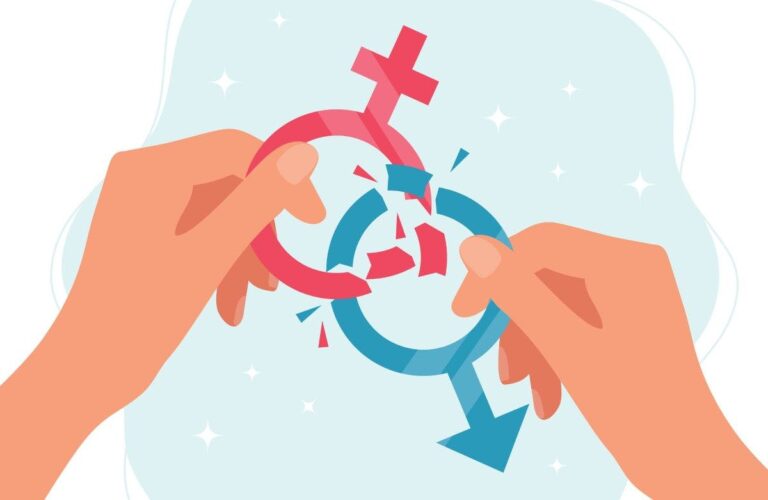Introduction: What are Gender Norms?
Gender norms are social roles encompassing a range of behaviors and attitudes that are generally considered acceptable, appropriate, or desirable for a person based on that person’s gender.
Key Aspects of Gender Norms:
- Cultural Expectations: Gender norms stem from cultures and their traditions, which vary across different societies and historical timeframes. For this reason, the norms and the expected “appropriate” behavior for men and women may differ based on the cultural context. For example, assertive, strong, and stoic are qualities associated with men, whilst nurturing, passive, and emotionally expressive are the expected behaviors for women.
- Roles and Responsibilities: Gender norms determine the specific roles and responsibilities for men and women. Typically, traditional roles state that men are the primary breadwinners, whereas women are the caretakers, tending to the needs of the household and children.
- Fashion Choices: Gender norms dictate the distinctive way each gender dresses, as well as their grooming styles and choice of accessories. We expect women to dress and wear makeup and jewelry, whilst men would wear suits.
- Socialization: The way different genders interact and engage with one another in social settings is also determined by gender norms. Traditional rules state that men are expected to take a leadership approach and direct the conversation, whilst women are more submissive.
So, what are examples of gender norms?
- Stoicism vs. Empathy: Men are stereotyped as being stoic and not letting their emotions rule them, while women are stereotyped as being highly empathetic and compassionate.
- Preoccupied with Power or Looks: Men are stereotyped as being preoccupied with money and power, while women are stereotyped as being obsessed with their looks.
- Provider vs. Nurturer: The man is seen as the provider or breadwinner, while the woman is seen as the nurturer of the family.
- Construction vs. Caring Industries: When women move into the workforce, they move into domestic or ‘caring’ industries such as healthcare and education. Despite the modernization of the workforce to include men and women, the idea that the domestic sphere is the woman’s sphere continues to be perpetuated indirectly.
How is Gen Z breaking gender norms?
Gender norms are internalized early in life, and therefore can establish a life cycle of gender socialization and stereotyping. However, recent trends have shown Gen Z distinguishing themselves from typical gender roles, being more inclusive of gender fluidity and subscribing less to gender stereotyping. So, it’s fair to say that Gen Z is breaking gender norms, but how?

According to a new study conducted by the advertising insights agency Bigeye, half of the members of Gen Z agree that traditional gender roles and binary gender labels are outdated.
Despite most Americans being cisgender (gender identity corresponds with the sex registered for them at birth), a significant percentage of younger generations believe the notion of identity is fluid and non-traditional. Additionally, they favor gender role flexibility (62% vs. 55% among older generations), allowing boys to be emotional and girls to be strong, breaking ‘traditional’ role patterns.
Gen Z is not supportive of patriarchy (a male-dominated society). Gen Z is least supportive of this model alongside the typical nuclear family, consisting of a male breadwinner, a female caretaker, and their children. Instead, we see Gen Z being more accepting of same-sex marriages (60% vs. 52% among older generations).
Even in education, gender stereotyping within Gen Z has decreased. In A-levels, we see girls doing subjects that are typically defined as masculine (e.g., maths, computer science, economics) and boys doing more typically feminine subjects (e.g., English, humanities, sociology, and psychology). As a result, we see gender barriers in careers breaking, with more women going into male-dominated careers such as engineering, mechanical work, medicine, the military, and taking lead CEO jobs. We are also seeing more men in typically feminine jobs, e.g., nursing and teaching.
Conclusion:
Gender norms are principles that have governed the nature of societies, and the rules on how we interact with each other for centuries. Through the work of Gen Z, we are witnessing a revolution, where we see less youth conforming to the norms of their genders and embracing gender fluidity. Gender stereotyping has been something they’ve consistently challenged, taking on an approach that encourages fairness and equal opportunity across all sectors of society.
Thank you for reading, click the link below to read more of our Opinion Articles:




